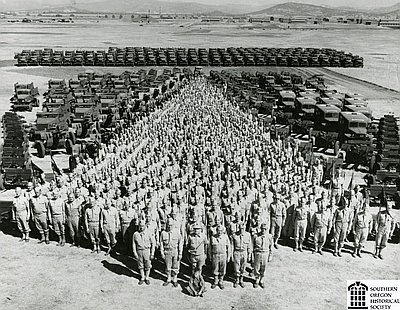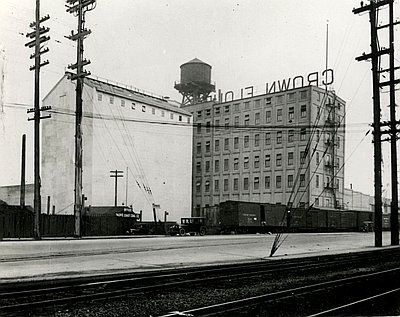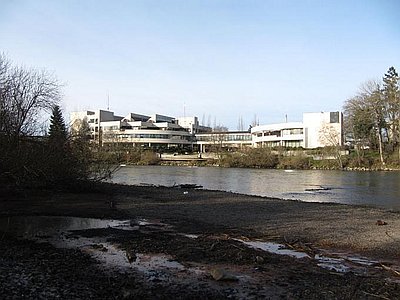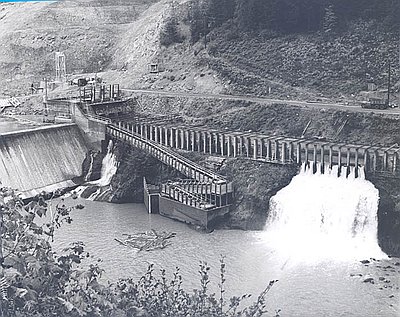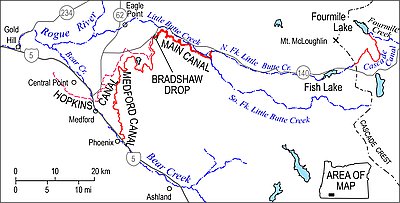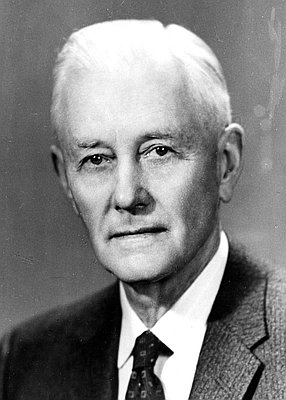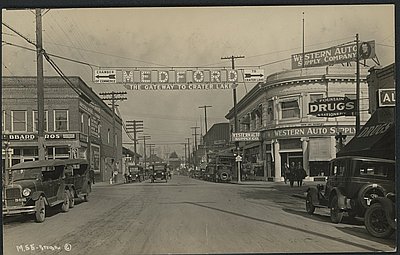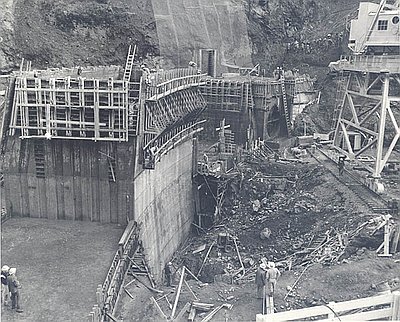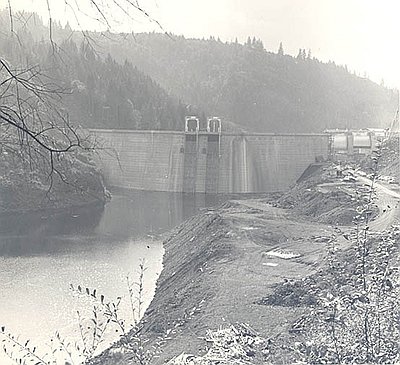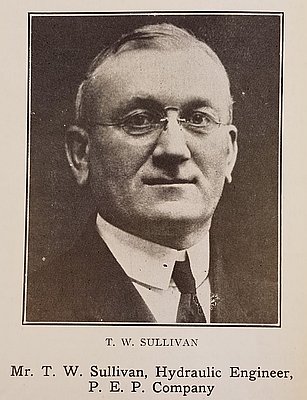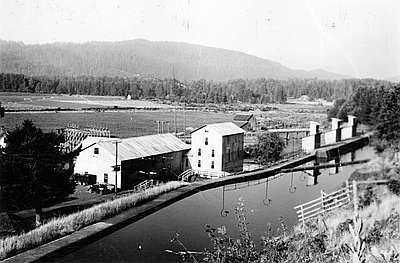George Kramer
George Kramer is the principal of Kramer & Company, a historic preservation consulting firm based in Ashland. He has written extensively on the historic significance of industrial, commercial, and transportation facilities in Oregon since 1989. Kramer is past chair of the Oregon Heritage Commission and serves as an advisor emeritus to the National Trust for Historic Preservation and Restore Oregon, formerly the Historic Preservation League of Oregon.
Author's Entries
-
![Beeson-Robison Ditch]()
Beeson-Robison Ditch
Located south of Talent, in southwest Oregon, the Beeson-Robison Irrigation Ditch diverts water from Wagner Creek to nearby agricultural land. Dug by John Beeson and John Robison, together with David Stearns, the Beeson-Robison Ditch relies on one of the oldest recognized water rights in Oregon. Welborn Beeson, John's seventeen-year-old son, …
Oregon Encyclopedia
-
![Camp White]()
Camp White
Camp White, a U.S. Army Cantonment, was built on the Agate Desert, near Medford, Oregon, at the start of World War II. First the home of the 91st "Fir Tree" Division under Major General Charles Gerhardt, Camp White trained the 96th Division as well as engineering, medical, and artillery units between 1942 …
Oregon Encyclopedia
-
![Carpenter Foundation and Alfred (1881-1974) & Helen Bundy (1886-1961) Carpenter]()
Carpenter Foundation and Alfred (1881-1974) & Helen Bundy (1886-1961) Carpenter
The Carpenter Foundation was first established in southern Oregon in 1942 to support recreational opportunities for military personnel. In 1958, the fund was reorganized as a foundation, and it has since grown to support activities in human services, education, the arts, and public interest issues. Born on May 7, 1881, Alfred …
Oregon Encyclopedia
-
![Clackamas Hydroelectric Project]()
Clackamas Hydroelectric Project
The Clackamas River Hydroelectric Project is a series of four powerhouses, dams, reservoirs, and related support and recreational facilities that are owned and operated by Portland General Electric (PGE). Located on 2,365 acres, almost all of it within the Mount Hood National Forest, the project generates 173 megawatts of power. …
Oregon Encyclopedia
-
![Crown/Centennial Mills]()
Crown/Centennial Mills
For eighty years, Crown Mills, known as Centennial Mills after 1949, was one of the largest producers of flour and milled grain in the Pacific Northwest. The original mill was built in 1910 on a site adjacent to the Willamette River in Portland, facing what is now Northwest Naito Parkway at …
Oregon Encyclopedia
-
![Eugene Water & Electric Board (EWEB)]()
Eugene Water & Electric Board (EWEB)
In the aftermath of a 1906 outbreak of typhoid fever in Eugene, which was traced to poor operating conditions at the privately owned water utility, the city sought to ensure its residents clean, reliable drinking water. In 1908, Eugene voters passed a $300,000 bond measure that allowed the city to …
Oregon Encyclopedia
-
![Faraday Dam and Powerhouse]()
Faraday Dam and Powerhouse
The Faraday Powerhouse, located in Estacada on the Clackamas River, produces hydroelectricity to serve the greater Portland area and is the oldest such facility on the river. Originally called Cazadero, the project is owned and operated by Portland General Electric (PGE). Construction began in 1904 by the Oregon Water & Power Company …
Oregon Encyclopedia
-
![Fish Lake Canal Company]()
Fish Lake Canal Company
The Fish Lake Water Company was organized in Medford in 1898 to create a plan for the irrigation of more than 50,000 acres of land that it would develop in the fertile Rogue Valley, which has hot summers and long growing seasons. The company proposed to enlarge Fish Lake, about …
Oregon Encyclopedia
-
![Interstate 5 in Oregon]()
Interstate 5 in Oregon
Interstate 5 is a 308-mile-long segment of highway that runs between the California state line and the Columbia River. The highway is a major element in Oregon’s 731-mile portion of the 41,000-mile, federally funded Interstate and Defense Highway Program, established by the Federal-Aid Highway Act. Construction of I-5 in Oregon …
Oregon Encyclopedia
-
![John C. Boyle (1887-1979)]()
John C. Boyle (1887-1979)
John Boyle was vice president, general manager, and long-time chief engineer of the California Oregon Power Company (COPCO), a privately held utility that served southern Oregon and portions of northern California. During his fifty-year career, he designed most of that region's hydroelectric projects and was principally responsible for COPCO's ground-breaking …
Oregon Encyclopedia
-
![Medford]()
Medford
Medford, the county seat of Jackson County, was platted in 1883 in the center of the Rogue Valley on Bear Creek. With more than 78,000 residents in 2017, Medford is the eighth largest city in Oregon and serves a metropolitan area of more than 200,000 people. The city is the …
Oregon Encyclopedia
-
![North Fork Dam and Powerhouse]()
North Fork Dam and Powerhouse
The North Fork Dam and Powerhouse, owned and operated by Portland General Electric (PGE), is the newest and largest of the hydroelectric generation projects on the Clackamas River. The dam was one of the highest thin-shell arch dams in the world when it was completed and remains the tallest of …
Oregon Encyclopedia
-
![North Fork Fish Ladder]()
North Fork Fish Ladder
At two miles in length, the North Fork Fish Ladder on the Clackamas River is among the longest such features in the world. Built as part of Portland General Electric’s (PGE) North Fork project, the fish ladder was completed in 1958. In the early years of hydroelectric generation, during the …
Oregon Encyclopedia
-
![Portland Railway Light and Power]()
Portland Railway Light and Power
Portland Railway Light & Power (PRLP) was created in 1906 through the consolidation of nearly every transportation and power generation utility between Vancouver, Washington, and Salem, Oregon. On May 4, the Portland Oregonian called it the biggest merger in Oregon history, reporting that “every electric light, power, and traction company …
Oregon Encyclopedia
-
![Thomas W. Sullivan (1863-1940)]()
Thomas W. Sullivan (1863-1940)
Thomas William Sullivan was a hydro engineer who, over a span of half a century, was largely responsible for the industrial development at Willamette Falls. While working for the Willamette Falls Pulp and Paper Company and serving as the long-time hydraulic engineer for Portland General Electric, Sullivan played a significant …
Oregon Encyclopedia
-
![Walterville Canal & Powerhouse]()
Walterville Canal & Powerhouse
The Walterville Canal and Powerhouse is owned and operated by the Eugene Water and Electric Board. Completed in 1911, the powerhouse is in Walterville, east of Springfield. The Walterville Powerhouse produces nine megawatts of electricity, about enough to power nine thousand homes. In 1910, Eugene voters approved a bond measure …
Oregon Encyclopedia





